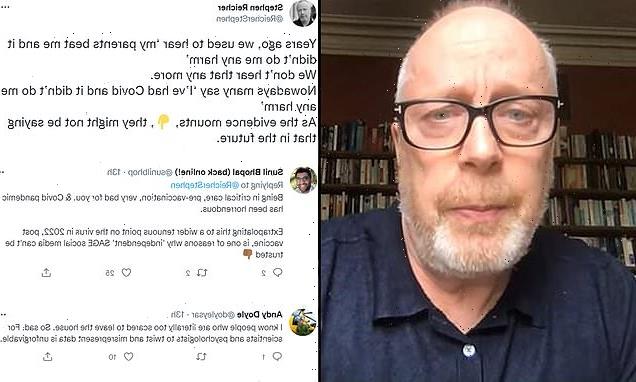Germany's reliance on Russian gas addressed by Eva Maydell
We use your sign-up to provide content in ways you’ve consented to and to improve our understanding of you. This may include adverts from us and 3rd parties based on our understanding. You can unsubscribe at any time. More info
Berlin is scrambling to wean itself off Russian fossil fuel imports amid the Ukraine war as the EU readies to slap down more energy sanctions. Germany has handed Russia over €9billion (£7.6billion) since the start of the invasion, mostly for pipeline gas, and had previously been pushing back against a gas ban. Now, the country, which gets 40 percent of its gas from Russia, may feel more at ease in parting ways with the Russian fuel after securing four floating terminals which have been repurposed to process LNG.
Gas needs to be cooled down to -160° Celsius and compressed into liquid form in a process known as liquification, creating LNG, so it can be shipped long-distance.
It then needs to undergo regasification at a special terminal so it can be used for energy purposes.
These special terminals, which take around five years to build, are what the German Government is betting on to shore up greater energy security.
They are known as Floating Storage and Regasification Units (FRSUs).
Vice-Chancellor Robert Habeck has said that a build-up of an LNG import structure is crucial for slashing dependence on Russia.


Now, the state of Lower Saxony will be home to at least one onshore and one floating LNG terminal that will receive gas brought over by large ships
Energy minister of Lower Saxony Olaf Lief said: “On the way out of the grip of Russian gas supplies, we in Lower Saxony are ready to take responsibility.”
Germany is hoping that the first terminal, which could allow for the import of upwards of 5 billion cubic meters (bcm) per year, will come into operation by the end of the year.
And a target of early 2023 has been set for a second ship from Norwegian company Hoegh.
In total, the terminals will let 10 to 14 bcm be imported.

Andree Stracke, chairman of utility RWE’s trading and supply arm, said: “As early as next year, it will thus be possible to replace part of the Russian gas.”
While the bloc is yet to lay out a ban on gas, as it did for oil this week, a gas embargo will likely follow next.
And the EU does have a strategy to prepare for this.
The REPowerEU blueprint involves diversifying gas sources to help to slash imports of Russian oil and gas by two thirds by the end of the year.
Now, it appears that Norway is stepping in to help Germany as it scrambles to part ways with Russia.
DON’T MISS
Putin outsmarts EU as oil still being delivered via backdoor route [REVEAL]
Russia threatens to make UK ‘radioactive wasteland’ [REPORT]
Germany strikes huge energy deal with India to slash Russia reliance [INSIGHT]


The energy strategy also details how boosting renewables could help to slash that reliance on Putin.
And Germany appears to be making headway in this domain too.
Berlin this week signed a cooperation agreement with New Delhi for a German-Indian hydrogen collaboration following multiple rounds of consultations.
Green hydrogen is created by splitting water into hydrogen and oxygen through a process called electrolysis and is viewed as a renewable source that can play an increasingly important role in the clean energy transition.
Mr Habeck said: “The expansion of green hydrogen production and application will serve the common long-term goal of driving the ramp-up of green hydrogen, making it commercially viable. As part of our energy partnership with India, we have agreed to work together in more depth on developing innovative solutions for sustainable green hydrogen production.An important milestone in reducing our dependence on fossil fuels.”
Source: Read Full Article


